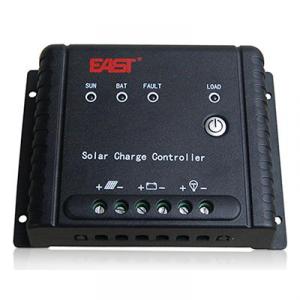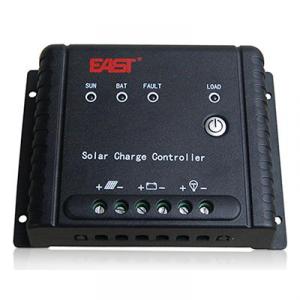Solar Charge Controller LED 5A-20A Maximum Power Point Tracking
- Loading Port:
- China main port
- Payment Terms:
- TT or LC
- Min Order Qty:
- 1 pc
- Supply Capability:
- 1000 pc/month
OKorder Service Pledge
OKorder Financial Service
You Might Also Like
Solar Charge Controller LED 5A-20A
This is a highly intelligent charge controller with Maximum Power Point Tracking (MPPT). The optimal and intelligent “MPPT + SOC” charge control is implemented. The power switching components consist of low-loss MOSFET type transistors that have a long operating life and guarantee high performance. The extremely low own consumption makes it especially suitable for solar home systems, solar street lamp system, advertising lighting, traffic management system, and other professional applications etc. With the reverse polarity protection, lightning protection, electronic fuse and automatic detection of faulty battery, the controller is robust, maintenance-free and user-friendly.
● Solar home system
● Public security monitoring system
● Solar street lamp system
● DC signal light power supply system
● Small and medium size telecommunication station power supply system
● Small size solar power station system and solar DC power supply system
Model | F12-05 F12-05M | F12-10 F12-10M | F12-20 | F24-05 F24-05M | F24-10 F24-10M | F24-20 |
System Voltage | 12V | 24V | ||||
Rated Charging Current | 5A | 10A | 20A | 5A | 10A | 20A |
Rated Load Current | 5A | 10A | 20A | 5A | 10A | 20A |
PV Panels Configuration(Suggestion)(Imp≤Rated Current) | ≤5A | ≤10A | ≤20A | ≤5A | ≤10A | ≤20A |
Battery Capacity | 17Ah~400Ah | |||||
Max. Efficiency | > 98% | |||||
Static Dissipation | < 0.5%(system rated current) | |||||
Solar Battery Port Input Voltage Range | 0 - 25V | 0 - 50V | ||||
Rated Battery Voltage | 12V | 24V | ||||
Buck Charge Voltage | 14.6V±0.2V | 29.2V ±0.3V | ||||
Float Charge Voltage | 14.4V±0.2V | 28.8V±0.3V | ||||
Overcharge Protection | 14.7V±0.2V | 29.4V±0.3V | ||||
Charging Resume Voltage | 13.2V ±0.2V | 26.4V ±0.3V | ||||
Undervoltage Alarm | 11.2V±0.2V | 22.4V±0.3V | ||||
Over Discharge Protection | 10.8 V±0.3V | 21.6V±0.4V 3.2V ±0.3V | ||||
Over Discharge Resume Start Voltage | 13.2V ±0.3V | 26.4V±0.3% | ||||
Discharge Circuit Voltage Drop | < 4 % (system rated voltage) | |||||
Overload, Short-Circuit Protection | 125%(60s)/ 150%(10s) / short-circuit auto shut down; | |||||
Input Overvoltage Protection | 200%(rated voltage) | |||||
PV Reverse Polarity Connection Protection | YES | |||||
Control Mode | Switch control / PWM | |||||
Display | LED | |||||
Alarm Mode | sound(optional)、light alarm | |||||
Working Temperature | -20℃ ~ +45℃ | |||||
Relative Humidity | 0-95%(noncondensing) | |||||
Altitude | 1000m with rated power (increase 100m, reduce power 1%) Max.4000m | |||||
Storage Temperature | -25℃ ~ +85℃ | |||||
Storage Humidity | ≤85% | |||||
Installation Method | hanging vertical installation | |||||
Packing Dimension WxDxH(mm) | 136× 100× 35 | |||||
Packing Weight(kg) | 0.23 | |||||
Weight(kg) | 0.28 | |||||
Package | 40pcs/carton | |||||
· Q. What is an UPS and What it is for ?
An uninterruptible power supply (UPS) is a device that allows your computer or telephone switch or critical equipement to keep running for at least a short time or longer time when the primary power source is lost. It also provides protection from power surges, spikes, brownouts, interference and other unwanted problems on the supported equipment.
· Q. How long the UPS to run when power goes?
This can take 3 paths.
1.You can pick a UPS that is rated for pretty much the full VA you need so it will be running at 100% of capability and will thus last 'n' minutes.
2.You can pick a UPS that is rated at a much higher VA value than you really need so, for example, is running at 50% of capability and will thus last for longer than the UPS from option 1.
3.You can use extra external battery packs to run for longer. If charging capability allows, the more and the bigger batteries you take with, the longer time UPS runs.
or using a generator after about 6 hours, it will be more cost-effective, with a short runtime UPS to bridge the generator start-up gap.
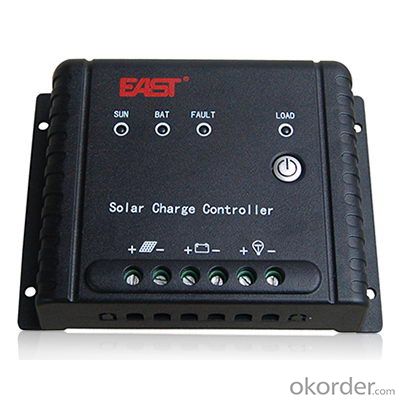


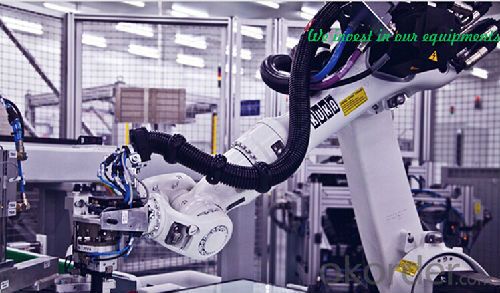
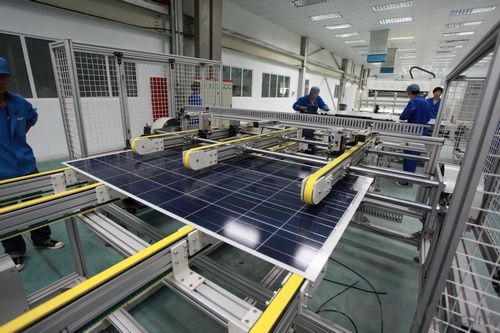
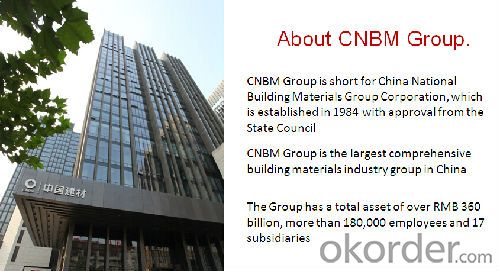
- Q:What are the advantages of using a transformerless solar inverter?
- One advantage of using a transformerless solar inverter is its higher efficiency. By eliminating the need for a bulky and heavy transformer, the inverter can convert the DC power from the solar panels to AC power more efficiently. This results in less energy loss during the conversion process, leading to higher overall system efficiency and increased energy generation. Additionally, transformerless inverters tend to be smaller and lighter, making them easier to install and maintain.
- Q:Can a solar inverter be used with solar-powered signage systems?
- Yes, a solar inverter can be used with solar-powered signage systems. Solar inverters are essential for converting the direct current (DC) generated by solar panels into alternating current (AC) that can be used to power electrical devices, including signage systems. The inverter ensures efficient utilization of solar energy and allows for seamless integration of solar power into signage systems.
- Q:Can a solar inverter be used with different types of backup power sources?
- Yes, a solar inverter can be used with different types of backup power sources. Solar inverters are designed to convert the direct current (DC) generated by solar panels into alternating current (AC) that can be used to power electrical devices. They can be integrated with various backup power sources such as batteries, generators, or the grid. This flexibility allows for a reliable and uninterrupted power supply, utilizing solar energy as the primary source while seamlessly switching to alternative power sources when needed.
- Q:Can a solar inverter be used in systems with multiple solar arrays?
- Yes, a solar inverter can be used in systems with multiple solar arrays. The inverter has the capability to convert the DC power generated by each solar array into AC power that can be used in the electrical system. It can manage and optimize the power output from multiple arrays, ensuring efficient and reliable operation of the overall solar system.
- Q:Can a solar inverter be used in a hybrid solar system?
- Yes, a solar inverter can be used in a hybrid solar system. A hybrid solar system combines both solar power and another source of energy, such as a battery or grid power. The solar inverter is responsible for converting the DC power generated by the solar panels into AC power that can be used in the home or fed back to the grid. In a hybrid solar system, the solar inverter would still perform this function, allowing the system to utilize both solar and other energy sources efficiently.
- Q:What is the role of capacitors in a solar inverter?
- The role of capacitors in a solar inverter is to store and release electrical energy, helping to stabilize the voltage and provide smooth and continuous power output. Capacitors in a solar inverter also assist in filtering out any unwanted electrical noise or interference, ensuring the efficient and reliable operation of the inverter.
- Q:What is the role of a power backup system in a solar inverter?
- The role of a power backup system in a solar inverter is to provide a reliable source of electricity during periods of power outages or when there is insufficient sunlight to generate solar energy. It ensures uninterrupted power supply to critical loads or appliances, ensuring continuous operation and minimizing disruptions. This backup system typically consists of batteries that store excess solar energy for later use, allowing the solar inverter to draw power from them when needed.
- Q:What is the role of a solar inverter in a grid-tied system?
- The role of a solar inverter in a grid-tied system is to convert the direct current (DC) electricity generated by the solar panels into alternating current (AC) electricity that is compatible with the electrical grid. It also ensures the synchronization and stability of the solar power system with the grid, allowing excess energy to be fed back into the grid and enabling the system to draw power from the grid when needed.
- Q:Are there any safety risks associated with solar inverters?
- Yes, there can be safety risks associated with solar inverters. While solar inverters are generally considered safe, there are a few potential hazards to be aware of. These include electrical shock, fire hazards, and the release of toxic gases. It is important to ensure proper installation, regular maintenance, and adherence to safety guidelines to mitigate these risks.
- Q:What are the key factors affecting the lifespan of a solar inverter?
- The key factors affecting the lifespan of a solar inverter include the quality of components used in its manufacturing, the design and construction of the inverter, the operating conditions and environment it is subjected to, and the maintenance and care it receives throughout its lifespan.
1. Manufacturer Overview |
|
|---|---|
| Location | |
| Year Established | |
| Annual Output Value | |
| Main Markets | |
| Company Certifications | |
2. Manufacturer Certificates |
|
|---|---|
| a) Certification Name | |
| Range | |
| Reference | |
| Validity Period | |
3. Manufacturer Capability |
|
|---|---|
| a)Trade Capacity | |
| Nearest Port | |
| Export Percentage | |
| No.of Employees in Trade Department | |
| Language Spoken: | |
| b)Factory Information | |
| Factory Size: | |
| No. of Production Lines | |
| Contract Manufacturing | |
| Product Price Range | |
Send your message to us
Solar Charge Controller LED 5A-20A Maximum Power Point Tracking
- Loading Port:
- China main port
- Payment Terms:
- TT or LC
- Min Order Qty:
- 1 pc
- Supply Capability:
- 1000 pc/month
OKorder Service Pledge
OKorder Financial Service
Similar products
New products
Hot products
Hot Searches
Related keywords
